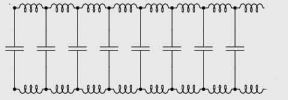We speak of 50- or 75-Ω coaxial cable. The novice wonders if these numbers apply to a given length, say 100 ft. Could you connect an ohmmeter to one end of the cable and expect to get that reading with or without the conductors shunted at the far end? The answer is absolutely not. The characteristic impedance […]
Soldering, Good and Bad
By David Herres Frequently the cause of electronic equipment failure turns out to be one or more poor solder joints. In fact, when conventional troubleshooting techniques fail to reveal a bad component, it is sometimes possible to restore operation by touching every joint in a suspected area with the soldering iron and a small amount […]
Capacitance: Friend and Foe
By David Herres Capacitance is everywhere. Electronic circuits make use of this phenomenon of the physical universe because of it can be used to separate dc from high-frequency signals, to store electrostatic energy, to block reverse-polarity current flow, and for many other applications. The other side of the coin is that unwanted, or parasitic, capacitance becomes […]
Mitigating Harmful Effects of Capacitance and Inductance
By David Herres Capacitive and inductive reactances are present throughout electrical equipment in proportion to the frequencies used. This is particularly true in long transmission lines. But then everything is transmission line at high frequency, including active as well as passive devices. A simple carbon resistor in the RF range and above has capacitive as […]
Grounding: Is that instrument really grounded?
By David Herres When using a bench oscilloscope, it is critical that the scope and the work be reliably grounded, assuming they both connect to an external power source. (Of course, this doesn’t apply to hand-held, battery-operated instruments such as the Fluke Scopemeter, which has isolated inputs.) If the scope or the device-under-test floats with respect to the […]
Compensating Scope Probes: Old Way and New Way
By David Herres EEs all know that any load is characterized by its impedance, which consists of resistance and capacitive and/or inductive reactance. These latter stand in opposition to one another. The lesser is subtracted from the greater and the result is combined with resistance to obtain impedance in accordance with the equation: Where Z= […]




